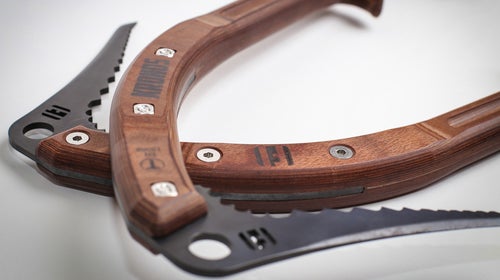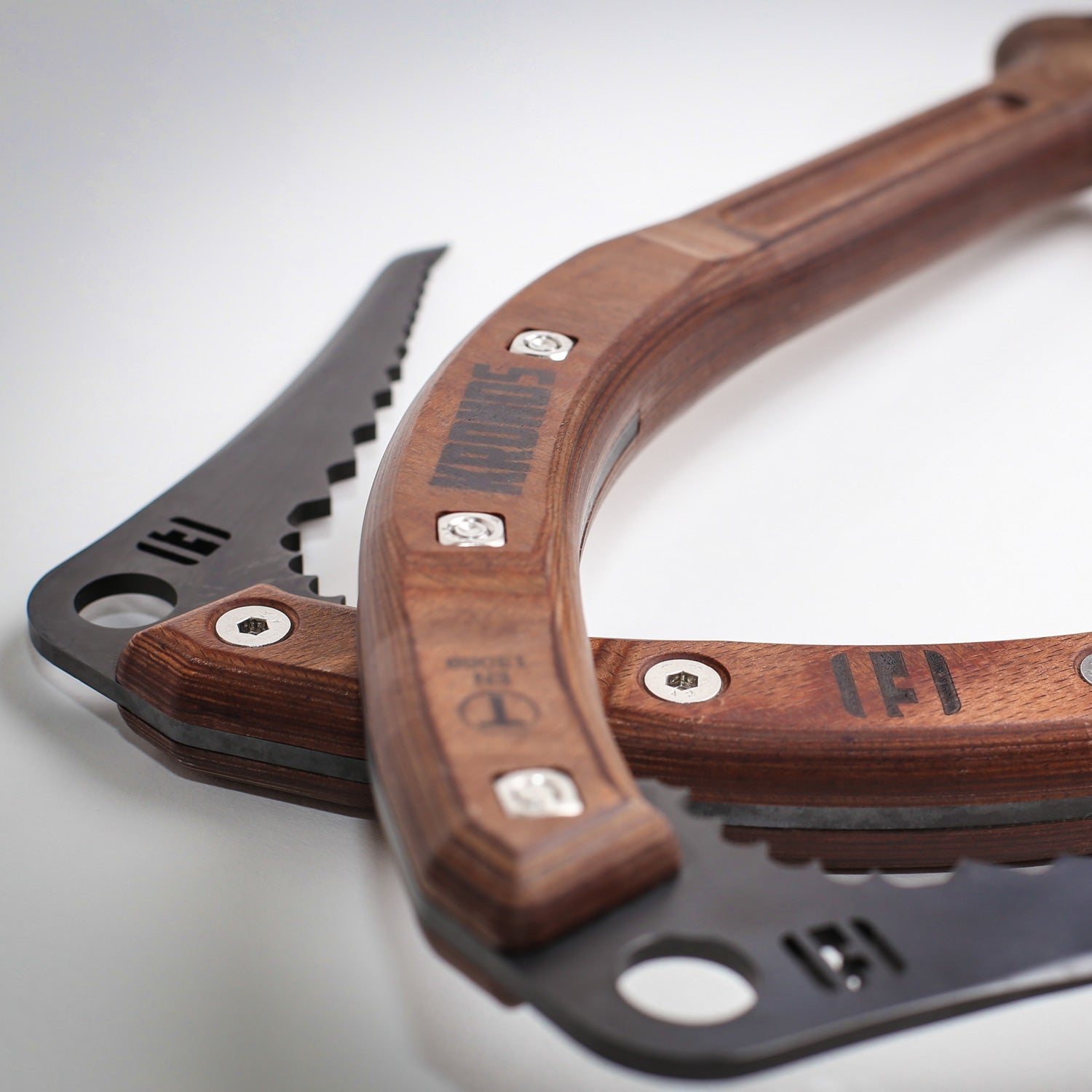Some gear (vintage campers, longbows, and surfboards) should be made from wood. But ice tools, which need to be insanely durable and strong? They’ve always been made from metal—and for good reason—until now. ��
Enter the , by Furnace Industries. The world’s first wooden technical ice tool, the Kronos is��rated to withstand the same forces as its steel counterparts, and it’s damn near as durable. The tool passed the test for an industry-standard T-rating, which includes a 3.5 kN (or 786 pounds) bend test of the shaft to simulate a deadman belay, a buried-pick torque test, and four kN on the head. With its increased sensitivity, dampened swing, and better insulation in the shaft, the Kronos is as high performance as it is pretty.��
The designers aren’t marketing this beauty as someone’s first beater tool. And even though the Kronos��can take the abuse, Ben Carlson, co-owner of Furnace,��admits it’s not��the ideal tool for hardcore mixed climbing,��mostly because of the high cost. (The tool costs about $100 more than��its leading metal competitor.) But for experienced climbers looking for a way to “celebrate their passion for this activity,” as Carlson puts it, the Kronos can be a fun, totally capable piece in��their quivers.
Furnace Industries has been making wood-handled tools��for climbing gyms since 2013, but it wasn’t until November that Furnace released its first technical ice tool for real-world use. After 27 prototypes and more than three years of development, the company is confident in a product that climbers can use outside—if they can get over the mantelpiece charm. “A lot of people want to buy them just to hang on their wall,” Carlson said. “Which is kind of a bummer to us, because we want people to use them.”
Borrowing concepts from plywood construction, the ax’s shaft is as strong as some aluminums, according to George Fisher, Furnace co-owner and Kronos designer. Developed in the 1940s for use in airplane propellers and eventually used in the undersides of Formula 1 race cars, the stuff is made by pressing thin layers of beechwood and resin together under high pressure and temperatures until the resin is forced into the wood’s cell structure, creating a strong, super-dense composite.��
But making the shaft wasn’t the hard part. The bigger challenge was joining the handle with the tool’s steel pick. “You can’t just take a [Petzl] and bolt it to a piece of hickory,” says Carlson.��
To prevent the pick from splintering��the wood, Fisher developed a way for the shaft to disperse the force of a swing by squeezing the pick. The metal from the pick continues part of the way down the shaft and is��sandwiched in the wood. Holes cut into the metal fit around what the ax’s creators refer to as “islands of wood,” which act like large wooden bolts inside the ax��that hold the metal in place.��
According to Fisher, getting the length of these islands right was key to making the ax��strong enough for use in the field. Unlike bolts, which would extend completely through the shaft and take the impact of a swing, the matching islands on either side of the metal come within just 0.15 millimeters��of touching each other—allowing the wood on either side to squeeze the pick as tightly as possible and distribute the swing��force throughout the entire length of the metal as it extends into the shaft. The few bolts you can see on the shaft are there solely to compress the wood even further, rather than hold the pick in place.��
Next step: Convince consumers that a wooden ax��can be just as capable as a steel one.��
$389, ��


